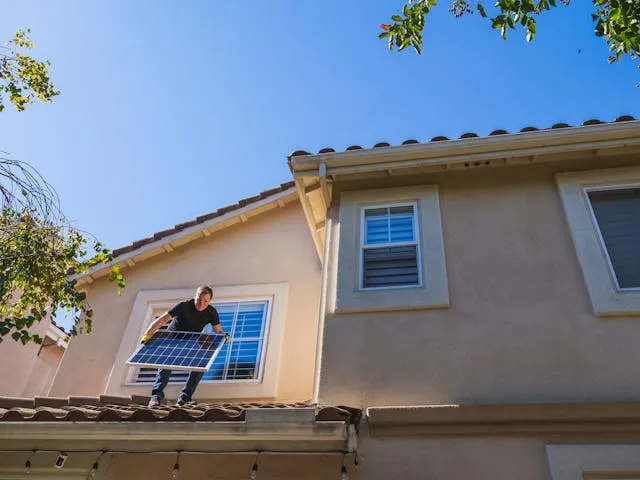Transitioning to solar-powered lighting or energy systems can be a significant investment, but rebate programs such as CPS Energy’s solar incentives make the process more affordable and financially rewarding. These rebates are designed to encourage homeowners, businesses, and municipalities to adopt renewable energy solutions, providing financial relief while promoting sustainability. Understanding how to leverage the CPS Solar Rebate can dramatically reduce installation costs and make solar energy a practical choice for long-term energy efficiency.
Also Read: The Changing Traditions of Saying Goodbye with Grace
Solar rebate programs not only provide monetary savings but also accelerate the adoption of cleaner energy technologies. By carefully planning installations and taking full advantage of rebate opportunities, property owners and communities can maximize the financial benefits while contributing to a greener, more energy-efficient future. This guide outlines how to navigate solar rebates effectively, ensuring that every project achieves its full cost-saving potential.
Step 1: Understanding CPS Solar Rebate Programs
- What the Rebates Cover- CPS Energy offers rebates for a variety of solar systems, including solar panels, LED lighting, and solar-powered street lighting. These incentives offset installation costs, helping property owners implement renewable energy solutions without straining their budgets. Rebates may vary depending on system size, energy output, and project type.
- Eligibility Criteria- To qualify for rebates, applicants typically need to meet specific requirements such as system capacity, equipment standards, and compliance with safety regulations. Residential, commercial, and municipal projects may have distinct eligibility rules, making it important to review program guidelines before applying.
- Financial Benefits- Rebates directly reduce upfront costs, making solar installations more financially accessible. They can also improve the return on investment over time by combining with lower electricity bills and long-term operational savings, providing both immediate and future economic benefits.
Step 2: Planning Your Solar Project
- System Design and Capacity- Proper planning begins with determining the appropriate size and type of solar system. Consider energy consumption, lighting requirements, and available sunlight exposure to design a system that meets current and future needs while qualifying for rebate programs.
- Choosing Energy-Efficient Equipment- High-efficiency solar panels and LED lighting systems maximize energy generation and minimize electricity usage. Selecting equipment that meets or exceeds CPS program standards ensures eligibility for rebates while improving long-term savings.
- Budgeting and Cost Analysis- Estimate total project costs, including equipment, installation, and maintenance. Compare this against potential rebate amounts to evaluate financial viability. A clear understanding of costs and savings helps in decision-making and ensures the project remains within budget.
Step 3: Applying for CPS Solar Rebates
- Gather Necessary Documentation- Prepare required documents, including project proposals, equipment specifications, and proof of compliance with CPS Energy guidelines. Complete and accurate documentation streamlines the approval process and minimizes delays.
- Submitting Your Application- Applications can typically be submitted online or via approved CPS Energy channels. Ensure that all sections are completed correctly, and verify that the system design aligns with program requirements to maximize the likelihood of rebate approval.
- Follow-Up and Approval Process- After submission, the application undergoes review. Some projects may require inspections or additional information. Monitoring the application status and promptly responding to requests helps expedite the approval process, ensuring timely access to rebates.
Step 4: Installation and Verification
- Choosing Certified Installers- Select installers who are certified and experienced with solar systems compliant with CPS rebate requirements. Proper installation ensures safety, system efficiency, and continued eligibility for rebates.
- System Installation and Testing- During installation, ensure that equipment is positioned correctly for maximum sunlight exposure and that LED lighting is installed according to safety and performance standards. Post-installation testing verifies that the system functions as expected.
- Verification for Rebates- CPS Energy may require verification, including inspections or documentation of installed systems, before finalizing rebate disbursement. Accurate reporting ensures that applicants receive the full rebate amount for which they are eligible.
Step 5: Maximizing Long-Term Savings
- Monitor Energy Production- Regularly track energy generation and usage to ensure the system is performing efficiently. Monitoring allows homeowners, businesses, and municipalities to identify issues quickly and optimize energy savings.
- Combine with Other Incentives- Explore additional incentives or programs, such as federal or state tax credits, to further increase financial benefits. Combining multiple programs can significantly reduce the overall cost of renewable energy projects.
- Maintenance and Efficiency Upkeep- Maintain solar panels and lighting systems according to manufacturer guidelines. Clean panels, check batteries, and inspect LED systems to maintain efficiency and longevity. Proper maintenance ensures consistent energy generation and sustained cost savings.
- Community and Environmental Impact- By participating in solar rebate programs, property owners contribute to a more sustainable environment. Reduced reliance on traditional electricity sources lowers carbon emissions and promotes cleaner air, creating long-term benefits for communities.
Tips for Successful Rebate Utilization
- Start Early: Begin planning and submitting applications as early as possible to avoid missing deadlines.
- Stay Informed: Keep up with CPS Energy program updates, as rebate amounts and eligibility requirements may change over time.
- Consult Professionals: Work with experienced installers and energy consultants to ensure compliance and optimal system performance.
- Document Everything: Maintain thorough records of equipment, installation, and energy production for verification purposes.
- Educate Stakeholders: Share program benefits with community members or property managers to encourage wider adoption and sustainable practices.
CPS Solar Rebate provides a valuable opportunity to make solar energy systems more accessible and affordable. By understanding program requirements, carefully planning installations, and maintaining proper systems, property owners can maximize savings while contributing to environmental sustainability. Leveraging these rebates allows homeowners, businesses, and municipalities to implement renewable energy solutions that reduce costs, enhance efficiency, and create greener, more resilient communities. Strategic planning, professional installation, and ongoing monitoring ensure that solar projects deliver both immediate and long-term benefits.

